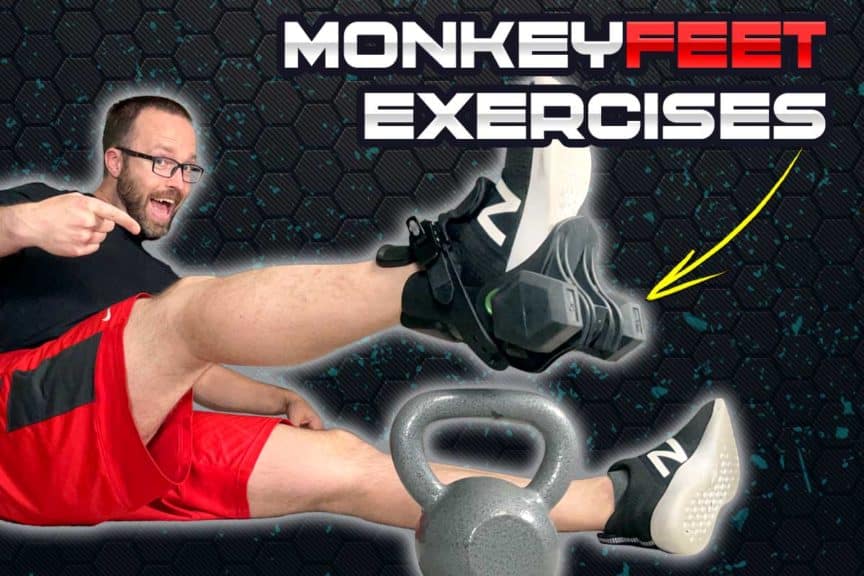This article will walk you through three challenging MoneyFeet exercises you can try for stronger legs. I’m quite a fan of MonkeyFeet, and as such, I use it on athletes, my patients in the clinic, and myself. And I love getting creative with it as well, as doing so provides not only greater training variety but also exposes weaknesses in specific muscles or regions of the body that may not be exposed with its more popular exercises (which are still great to perform, by the way).
Three challenging exercises you can try with your MonkeyFeet are:
- The long sitting leg lift, which intensely targets the rectus femoris muscle
- The half-kneeling knee drive, which targets both legs during the movement
- The eccentric knee extension, which is an outstanding quadriceps strength builder
And, of course, if you want some seriously challenging (and uncommon) MonkeyFeet Exercises for your hamstrings and gluteal muscles, check out my other article:
If you would like a 10% discount on any Animalhouse Fitness products, use the discount code “strengthresurgence” at checkout on their website!
Please note: the above discount code is part of my affiliation with Animalhouse Fitness and provides me with a small commission that helps to support this website. Your support is always greatly appreciated!
Related article: MonkeyFeet Review | Performance & Rehab (Expert Insight)
Exercise 1: Long sitting leg lifts
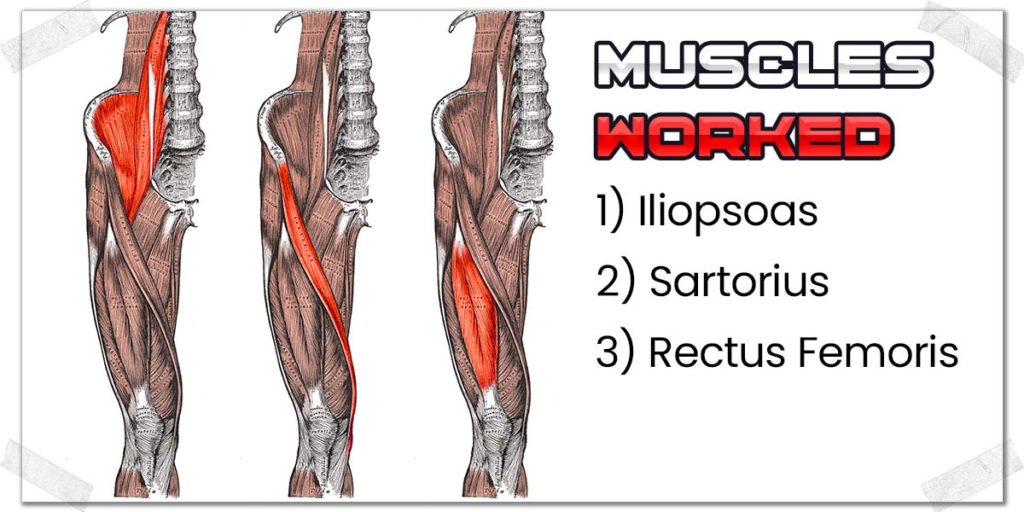
Images: Henry Vandyke Carter, Public domain, via Wikimedia Commons
The long sitting position refers to sitting on the ground with your legs out in front of you. It’s often challenging enough for people to simply sit upright in this position, but we’re gonna kick it up a notch. This exercise is brilliant for targeting specific muscles in the front of your upper hip.
Some of this will be your hip flexor muscles (i.e., the iliopsoas), but likely most of the effort will be coming from the rectus femoris muscle, which is one of your quadriceps muscles, and the only one of these four muscles to cross over the front of your hip.
This poor muscle is not only working to pick your leg up off the ground but also to keep your knee straight since it crosses the hip joint and the knee joint, so it’s getting hammered with two tasks for this exercise instead of one!
Pro tip: If this exercise is too challenging to perform with a light dumbbell, you can forego the MonkeyFeet altogether for the time being. Once you build up enough strength to perform the movement with just your leg, you can then progress to using the MonkeyFeet.
How to perform long sitting leg lifts
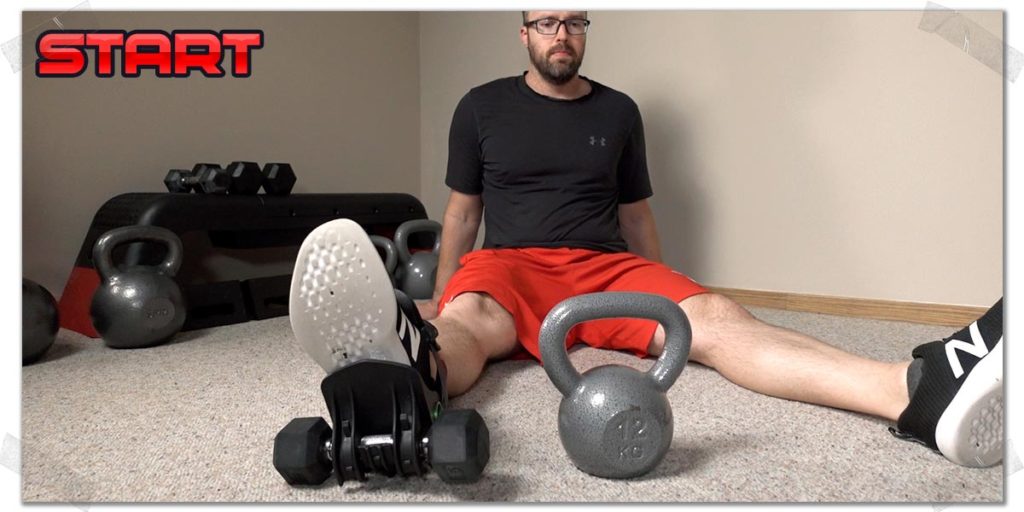
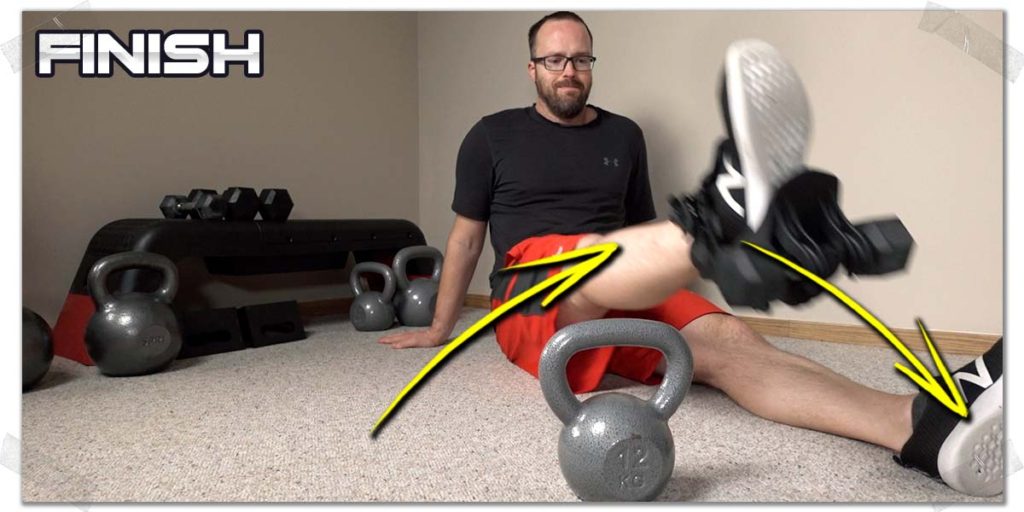
- Strap your MonkeyFeet onto your foot, with likely nothing more than a five-pound dumbbell. From there, assume the long sitting position.
- Then while keeping your leg straight (i.e., don’t bend your knee), lift your leg up and over any small object you’ve placed in front of you, likely one that’s nothing more than about six inches in height. I’ve used a kettlebell for demonstration purposes, and it’s the perfect height for me.
- Lean back onto your hands if you need to make the movement easier; otherwise, try to sit upright while keeping your hands off the ground during the exercise. Have fun, and get ready to feel the burn!
Exercise 2: Half-kneeling knee drives
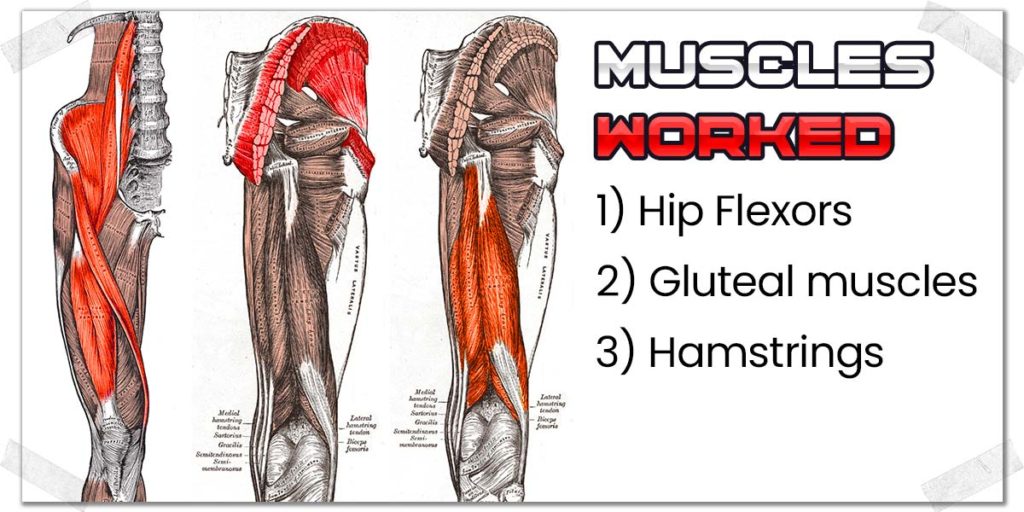
Images: Henry Vandyke Carter, Public domain, via Wikimedia Commons
The half-kneeling position refers to one knee being on the ground while the foot on the opposite leg is flat on the floor. Pushing your body up into a standing position out of the half-kneeling position will require an immense amount of effort from the leg in contact with the ground. And it will become even harder with weight strapped to your opposite foot.
As such, the half-kneeling knee drive will challenge both legs simultaneously, albeit in a different manner on each leg. The hip muscles in your stance leg will work aggressively to push you up and lower you back down. In contrast, your hamstring and hip flexor muscle muscles in your MonkeyFeet leg will work aggressively to keep your knee bent and flex your hip. The result is a taxing movement for both of your lower extremities.
How to perform half-kneeling knee drives
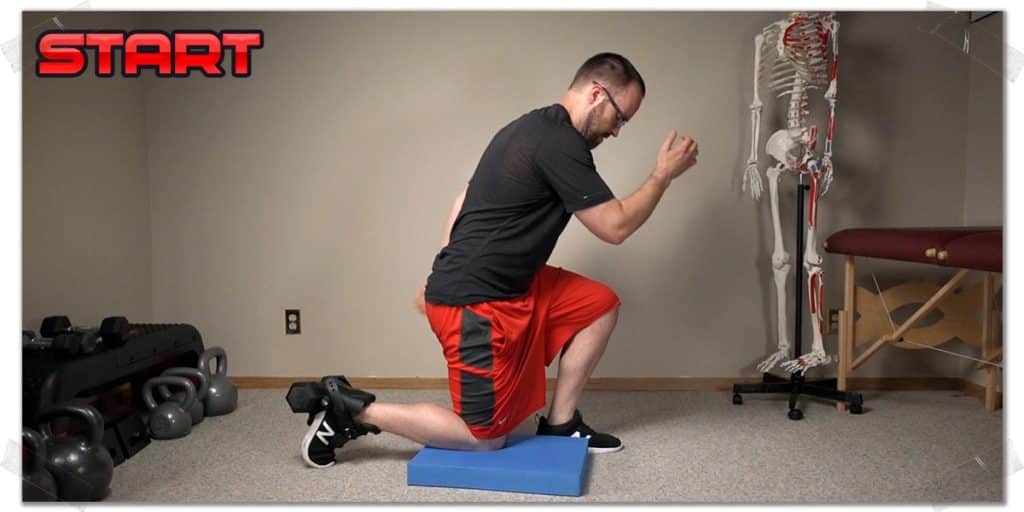
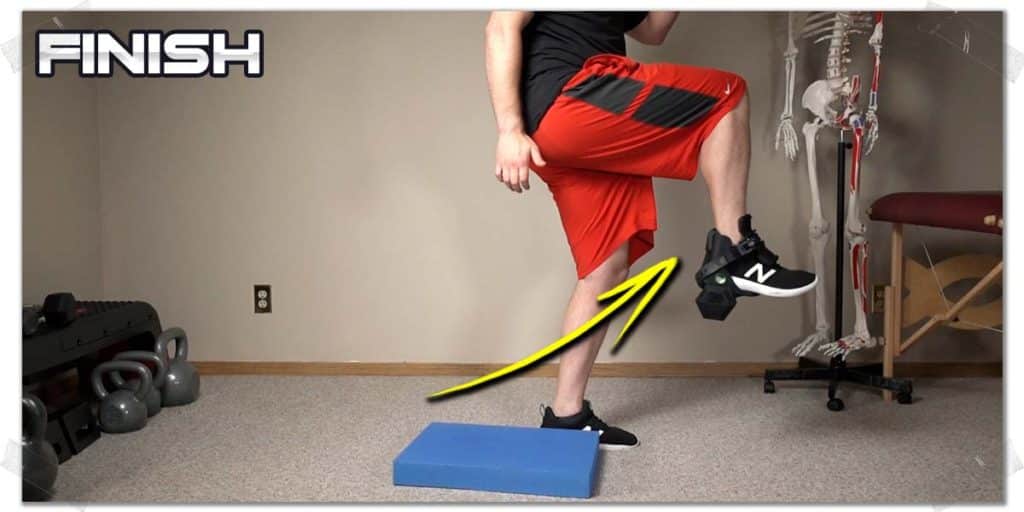
- With the MonkeyFeet strapped to one foot, assume the half-kneeling position so that the knee on your MonkeyFeet leg is on the ground.
- Next, push yourself upwards while ensuring you keep your MonkeyFeet knee bent to 90 degrees at all times (this will keep your hamstrings engaged).
- As you push yourself up to a full standing position, be sure to drive your knee up as high as possible to challenge your hip flexors. Once you’ve done so, hold this position for a second until you’ve achieved total standing balance.
- Then, slowly lower yourself back to the starting position and repeat. Remember: the slower you lower yourself back down, the greater the challenge will be for your muscles.
Exercise 3: Eccentric leg extensions
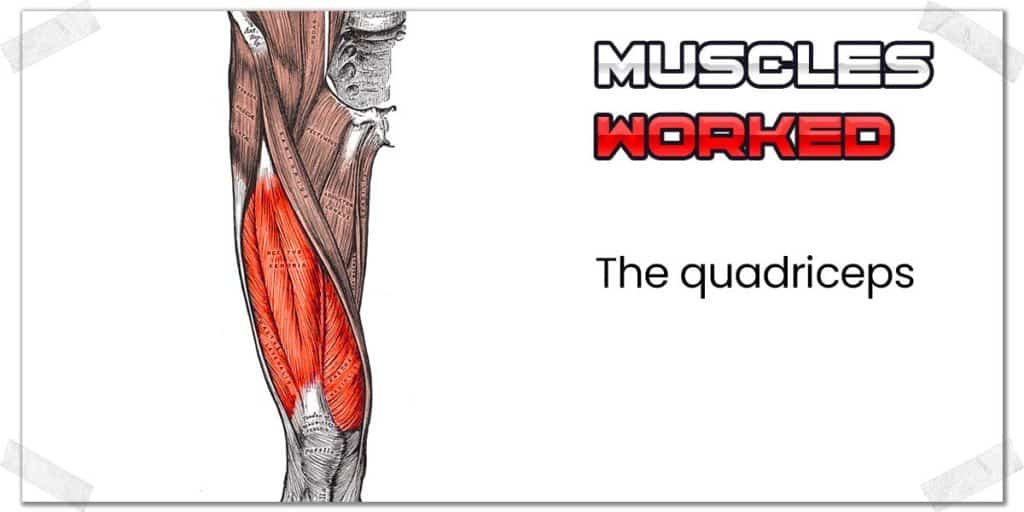
An eccentric muscle contraction refers to the controlled lengthening that a muscle must produce when returning to a resting position (a non-contracted position). Eccentric exercises involve using a heavy (but appropriate) weight to strengthen muscles.
The key is to use all the muscle’s energy for the controlled lengthening portion of the exercise and not expend much (or any) energy on the opposite phase of the movement (known as the concentric phase).
So for this exercise, we don’t want to use much muscle energy to straighten the leg/knee; we want to use the muscle’s energy to slowly lower the weight from a straight leg position to a bent leg position.
Here’s how to do it:
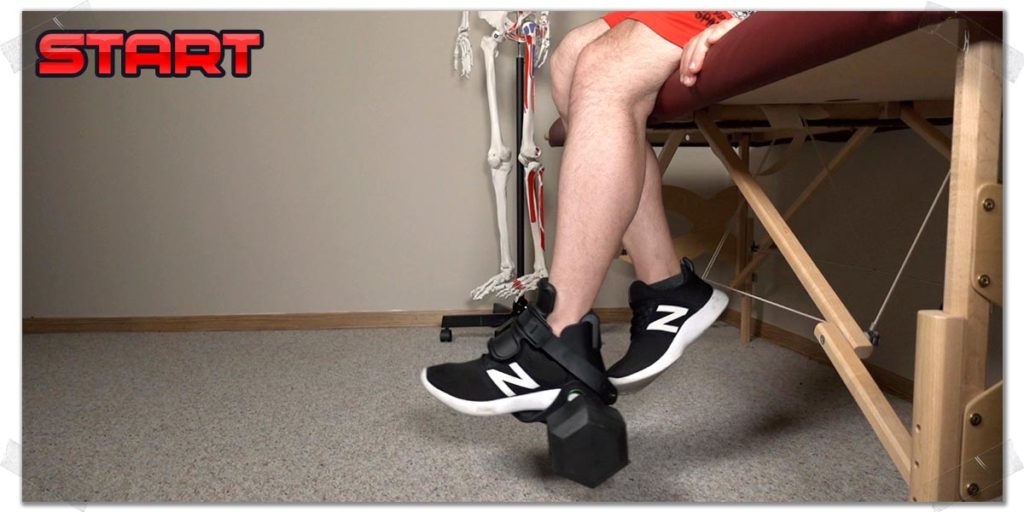
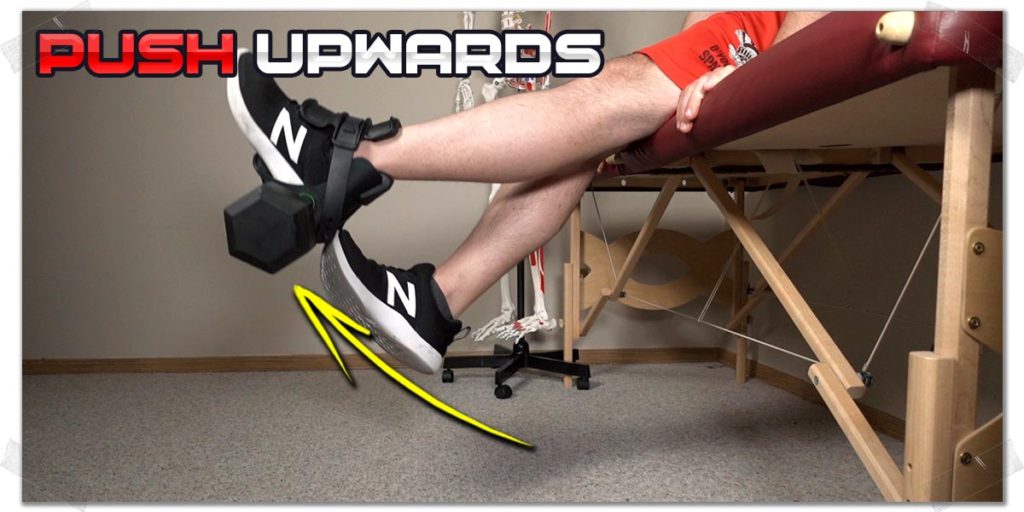
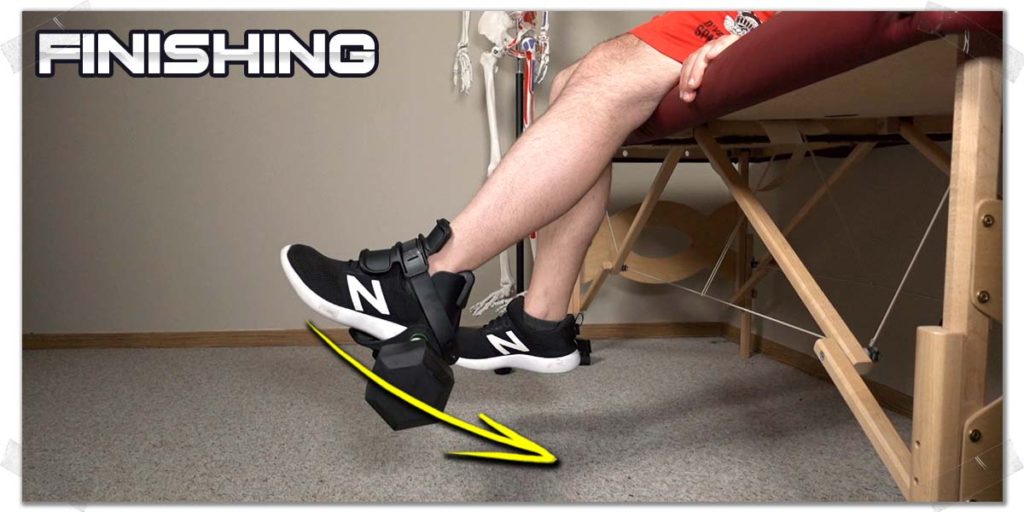
How to perform eccentric leg extensions
- For the eccentric knee extensions, you’ll want to use a heavy dumbbell, particularly one that’s heavy enough to make it challenging to do more than a couple of repetitions of the traditional knee extension exercise.
- Sit on the edge of an elevated surface, bench, etc., so your feet can freely dangle beneath you without hitting the ground.
- Next, use your non MonkeyFeet leg to help push your other leg to the straight knee position. Then, take your bottom foot away and try to hold your MonkeyFeet leg straight for a second or two.
- Then begin lowering it down as slowly as possible back to the starting position. The slower you go, the more challenging it will be for your quadriceps muscles.
- Once you’ve returned to the starting position, push the weight back up again and repeat. (I like taking five seconds to lower the leg back to the starting position.)
- It may look simple, but give it a try, and once you have the right weight dialled in, you’ll be tiring out your quads in no time.
Final thoughts
It’s fun to “monkey around” with exercises from time to time, and the MonkeyFeet offers an amazing extent of freedom to do so. Don’t neglect its more traditional exercises, as they’ll serve you well while helping build a strong and bulletproof lower body. But when the time comes to try some new exercises and variations, these three exercises can be just the ticket!

Hi! I’m Jim Wittstrom, PT, DPT, CSCS, Pn1.
I am a physical therapist who is passionate about all things pertaining to strength & conditioning, human movement, injury prevention and rehabilitation. I created StrengthResurgence.com in order to help others become stronger and healthier. I also love helping aspiring students and therapists fulfill their dreams of becoming successful in school and within their clinical PT practice. Thanks for checking out my site!

